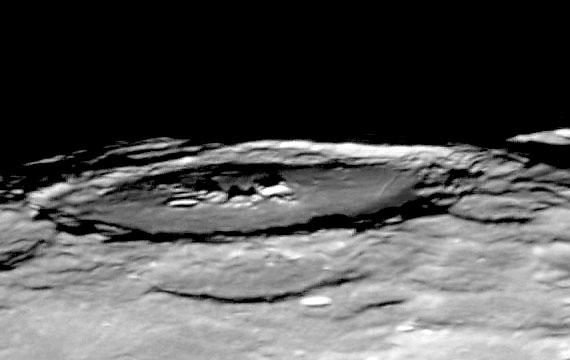November 8, 2015
Humboldt
Originally published November 7, 2004
Image Credit: Richard Bosman |
|
Humboldt Humboldt was one of the greatest explorer-naturalists of the 19th century so it is fitting that a crater with his name is in an often inaccessible region near the limb. But this magnificent and hardly visible 207 km wide crater is named not for the explorer, but for his stay-at-home brother, Wilhelm. Alexander, the explorer, gets the much bigger Mare Humboldtianum. If it were closer to the lunar center of face, the crater Humboldt would be one of the finest sights on the Moon. As shown in in Richard's image the crater has a broad flat floor with both central peaks and a peculiar line of smaller mountains. But as seen on Apollo images the crater has a wonderful family of concentric and radial rilles, only one of which is possible to capture from Earth - and it is visible on the image above. Under high Sun conditions - and favorable librations - another feature of Humboldt is visible - dark pyroclastic deposits. And Humboldt also possesses a perfect concentric crater. Technical Details: Related Links: Yesterday's LPOD: Little Known Fault Tomorrow's LPOD: Maps on Discs |
|
Author & Editor: |
COMMENTS?
Register, Log in, and join in the comments.




